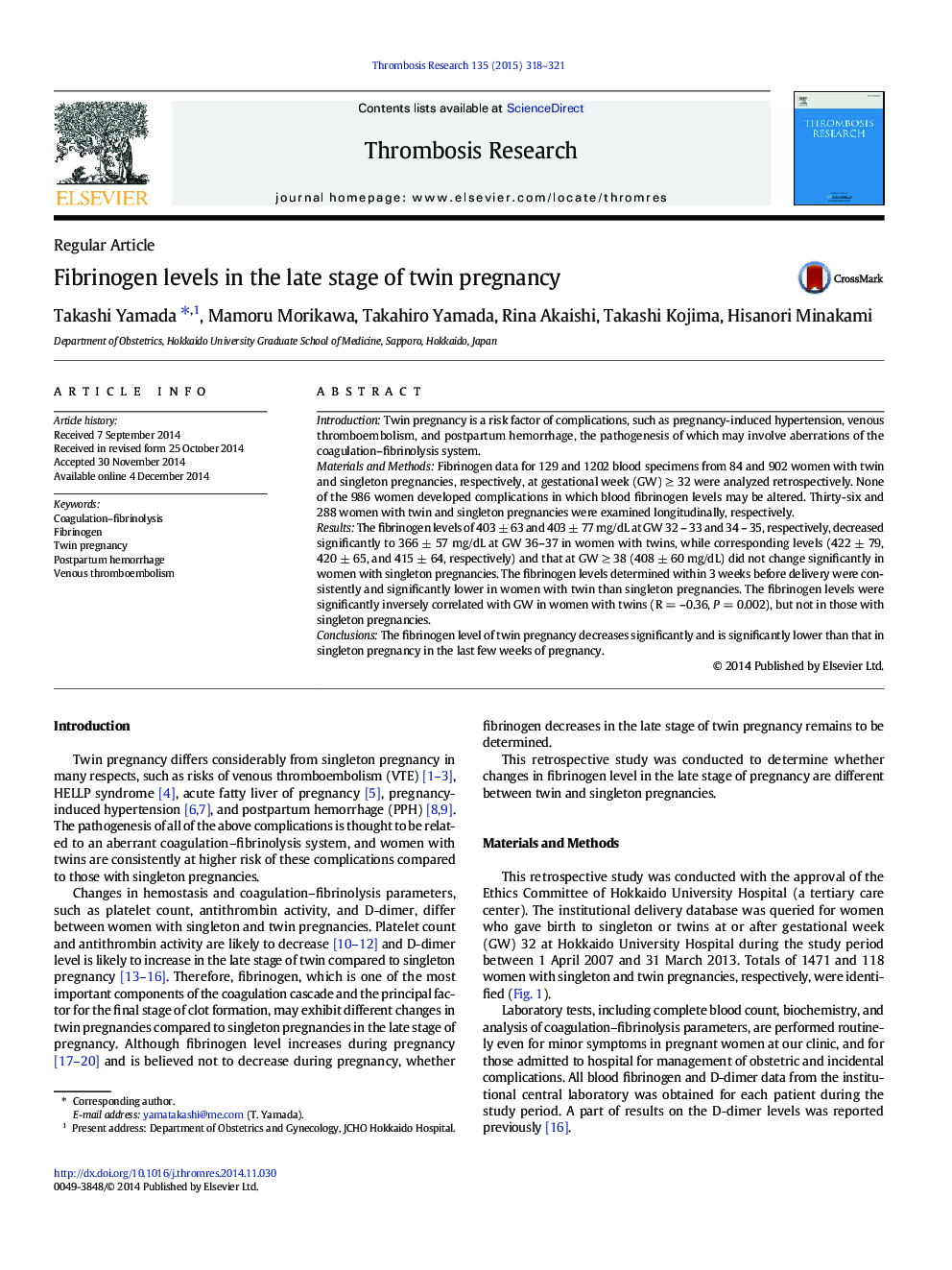| Article ID | Journal | Published Year | Pages | File Type |
|---|---|---|---|---|
| 6000715 | Thrombosis Research | 2015 | 4 Pages |
â¢Blood fibrinogen levels were compared between twin and singleton pregnancies.â¢Fibrinogen decreased in late gestation of twin, but not of singleton pregnancy.â¢Fibrinogen in 3 weeks before delivery was lower in twin than singleton pregnancy.
IntroductionTwin pregnancy is a risk factor of complications, such as pregnancy-induced hypertension, venous thromboembolism, and postpartum hemorrhage, the pathogenesis of which may involve aberrations of the coagulation-fibrinolysis system.Materials and MethodsFibrinogen data for 129 and 1202 blood specimens from 84 and 902 women with twin and singleton pregnancies, respectively, at gestational week (GW) â¥Â 32 were analyzed retrospectively. None of the 986 women developed complications in which blood fibrinogen levels may be altered. Thirty-six and 288 women with twin and singleton pregnancies were examined longitudinally, respectively.ResultsThe fibrinogen levels of 403 ± 63 and 403 ± 77 mg/dL at GW 32 - 33 and 34 - 35, respectively, decreased significantly to 366 ± 57 mg/dL at GW 36-37 in women with twins, while corresponding levels (422 ± 79, 420 ± 65, and 415 ± 64, respectively) and that at GW â¥Â 38 (408 ± 60 mg/dL) did not change significantly in women with singleton pregnancies. The fibrinogen levels determined within 3 weeks before delivery were consistently and significantly lower in women with twin than singleton pregnancies. The fibrinogen levels were significantly inversely correlated with GW in women with twins (R = -0.36, P = 0.002), but not in those with singleton pregnancies.ConclusionsThe fibrinogen level of twin pregnancy decreases significantly and is significantly lower than that in singleton pregnancy in the last few weeks of pregnancy.
